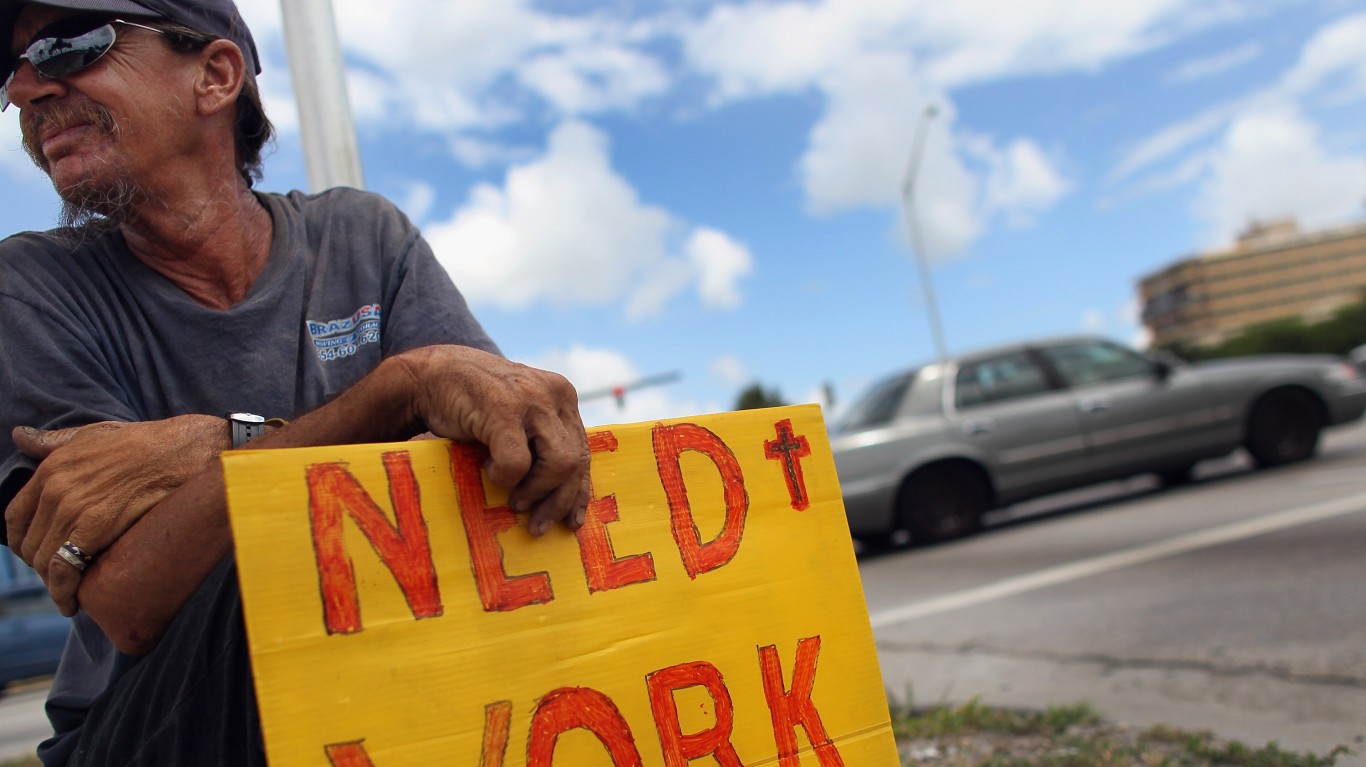
The most obvious casualty of the COVID-19-induced recession has been that the U.S. job market went from stellar to awful in a matter of weeks. Jobless claims had been steadily running at close to 200,000 per week before the pandemic, and then there were 40 million combined jobless claims over a period of 10 weeks.
While weekly jobless claims have been coming down from the peak March 28 report of nearly 6.9 million claims, the week of July 18 was the first actual gain in weekly jobless claims since that peak.
The Bureau of Labor Statistics reported that weekly jobless claims rose by 109,000 to 1.416 million from a revised 1.31 million the prior week. The Wall Street Journal had published a consensus estimate of 1.3 million that was expected for this latest report.
Some might try to point out that this could be the start of the double-dip, but the reality is that things haven’t come anywhere close to looking good yet in the economy. And while this was the first move higher in the weekly jobless claims, these weekly numbers had only been marginally improving from the 1.56 million claims back at the start of June.
The continuing jobless claims, which are sometimes referred to as the army of the unemployed, saw a drop of 1.1 million to 16.197 million people. That figure comes with a one-week lag, but obviously the uptick in weekly claims is unlikely to give any massive expected change to the massive pool of total unemployed people.
The big question now is whether this means the job market is on the verge of rolling over again, now that many local economic reopenings have been dialed back due to explosive growth in the number of COVID-19 cases. Another issue to consider is that the enhanced unemployment benefits are by and large ending, if no new stimulus package is formalized in the next week.
Most of the businesses that received their Paycheck Protection Program loans also have spent the bulk of what was received, and there are generally no procedures available for borrowers to receive their formal loan forgiveness that was promised going into the loans, as long as the overwhelming majority of the loan was used toward employee paycheck support.
What seems obvious is that the jobs market now is working its way through a rough patch. It also should be obvious that, even if a cure or vaccine comes to market, there will not be a sudden return to the pre-pandemic jobs market. Many companies have benefited from the sudden change in behavior, but most American businesses have been harmed by the recession.
As for the jobs of a few months ago and in prior years, new companies and old companies alike will have to create new positions with different functions for the next massive wave of new hires, whenever that comes. Recent non-governmental data on business closures showed that a very large percentage of the businesses that have closed will simply never reopen. Sadly, there may not be new businesses in the same functions that will dare want to come back in and take their place.
The official unemployment rate was last seen at 11.1% (June) after peaking at 14.7% (April), but the actual situation may have been far worse. Federal Reserve Chair Jerome Powell recently said that 40% of those making $40,000 and under had been suddenly unemployed at the peak.
It will be another two weeks before we get to see the monthly payrolls gains or losses, but there already may be some tempering of the prior 4.8 million payrolls added in June, now that the reopenings have been dialed down and as companies are settling into whatever the new normal is in this business cycle.
The jobs market may not be dying all over again, but this seems to be a time when the rapid immediate improvements that were seen are entering a choppier phase. How great can the job market be when the Federal Reserve Bank of Atlanta’s GDPNow forecast for second-quarter 2020 gross domestic product was last seen at nearly a −35% reading?
Travel Cards Are Getting Too Good To Ignore (sponsored)
Credit card companies are pulling out all the stops, with the issuers are offering insane travel rewards and perks.
We’re talking huge sign-up bonuses, points on every purchase, and benefits like lounge access, travel credits, and free hotel nights. For travelers, these rewards can add up to thousands of dollars in flights, upgrades, and luxury experiences every year.
It’s like getting paid to travel — and it’s available to qualified borrowers who know where to look.
We’ve rounded up some of the best travel credit cards on the market. Click here to see the list. Don’t miss these offers — they won’t be this good forever.
Thank you for reading! Have some feedback for us?
Contact the 24/7 Wall St. editorial team.
 24/7 Wall St.
24/7 Wall St.



